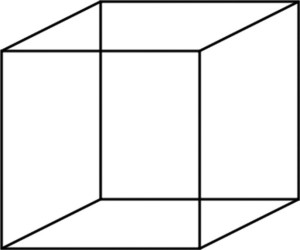This video was sent to me by Shaun Shelly, a frequent contributor to this blog. It conveys how a well-practiced “mind set” can end up being so much more than a momentary wrong turn. It can be an  inescapable ride on a vehicle that’s about to crash. And it can have a vast nonverbal dimension that is entirely invisible. Like an iceberg, most of its mass is probably below the surface.
inescapable ride on a vehicle that’s about to crash. And it can have a vast nonverbal dimension that is entirely invisible. Like an iceberg, most of its mass is probably below the surface.
I’m talking about addiction, of course. We want to understand how we can shift from one “you” to the other “you.” That was the theme of my post a couple of weeks ago. But the craving self is so thoroughly sculpted in brain tissue, so overpowering in the moment, that it’s difficult if not impossible to just shift out of it. We want to turn it off like a buzzing light bulb, and we keep flicking the switch, and nothing happens. You can’t switch it off because it is a stable, learned pattern that arises in mind and brain whenever drugs or booze are present.
Okay, so watch the video, then we’ll talk. (The creator, whose name sounds like “Destin,” comes across pretty manic, but don’t let that stop you.)
Destin has learned a pattern of motor responses triggered by the sensory information that comes from getting on and riding a bike. As have most of us. The trouble is….it’s the wrong pattern for his particular bike. Every time he tries to ride, the sensory information (feel of the handle bars, changes in the visual field with motion, tilting of the bike with gravity) triggers his well-learned motor response pattern — without his say-so. Even his intense cognitive efforts can’t change it: “Knowledge is not understanding.”
But it’s the “wrong” pattern. So he continues to fall.
There are a few places we can go with this.
(We could consider his weird bike to be analogous to addiction…..In which case we’d say it took him a long time to get addicted — and once he got it, he found it hard to unlearn. He finally manages it 6 minutes into the clip.)
But let’s keep it simple. Let’s imagine that the way he learned to ride a normal bike all those years is like learning an addictive mental habit. It became ingrained. When he wanted to shuck that habit, he couldn’t. It was too well learned.
 For Destin and for addicts, the ingrained habit comes to life in a matter of moments. The cues for the bike rider are the sensory inputs I mentioned above. For the addict as well, sensory inputs can be hazardous. That’s why you don’t drive past the liquor store or chat
For Destin and for addicts, the ingrained habit comes to life in a matter of moments. The cues for the bike rider are the sensory inputs I mentioned above. For the addict as well, sensory inputs can be hazardous. That’s why you don’t drive past the liquor store or chat  on the phone with your former dope partner if you’re serious about staying abstinent. But addicts don’t need to experience that inflow of sensory information. All they have to do is bring the image to mind. Remember how great it felt, fondle that memory, taste it, and then the craving explodes to the surface.
on the phone with your former dope partner if you’re serious about staying abstinent. But addicts don’t need to experience that inflow of sensory information. All they have to do is bring the image to mind. Remember how great it felt, fondle that memory, taste it, and then the craving explodes to the surface.
We could consider how anxiety itself amplifies the cascade that leads to the fall for Destin — how the first glimmer of imbalance is enough to propel the motor movements that will rapidly defeat him. Not much different from addiction at all. To paraphrase Frank Herbert’s Dune, anxiety is the mind-killer.
 What holds the pattern so firmly in place for the bike rider is the urgency of turning the handlebars to offset the first hint of imbalance. That urgency is the middleman that sends the messages to the muscles…turn the handlebars this way, which is sure to complete the disaster. For addicts, what holds the pattern in place is also urgency — but it’s entirely mental, not physical (except in the case of physical withdrawal symptoms). The addict doesn’t need physical uncertainty to propel the wrong moves, just emotional uncertainly, which accelerates to urgency, which rapidly calls up habitual responses: I want it, yes, I really do, just this one time, I deserve it, I’m going to do it, and it’ll be all right.
What holds the pattern so firmly in place for the bike rider is the urgency of turning the handlebars to offset the first hint of imbalance. That urgency is the middleman that sends the messages to the muscles…turn the handlebars this way, which is sure to complete the disaster. For addicts, what holds the pattern in place is also urgency — but it’s entirely mental, not physical (except in the case of physical withdrawal symptoms). The addict doesn’t need physical uncertainty to propel the wrong moves, just emotional uncertainly, which accelerates to urgency, which rapidly calls up habitual responses: I want it, yes, I really do, just this one time, I deserve it, I’m going to do it, and it’ll be all right.
In addiction, the urgency, craving, desire, whatever you want to call it, is the psychological product of dopamine flooding particular synapses in the striatum. But I’ve told that story elsewhere. For now, what’s most important is that, once the habitual pattern arises on each occasion, two things happen:
- We are lost, at least this time around, we’re going to fall — unless we’re really clever and we’ve already been practicing bail-out techniques.
- The pattern, having overtaken our nervous system yet again, is reinforced in our synapses, and thus more likely to arise in the future.

There’s one more point that I hope you’ve noticed: Destin finally did learn to take control of his riding pattern, to rid himself of the habitual response set that led inevitably to a crash. But it took practice! Five minutes a day, for eight months! The moral is simple: well-learned brain algorithms need not be permanent. You can change them, especially if they’re not working for you. But it takes time and it takes practice.


Leave a Reply to Marc Cancel reply